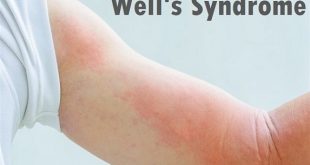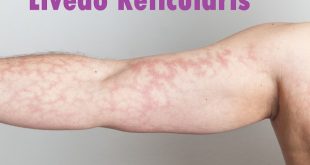Definition
Liver spots, often referred to as age spots or solar lentigines, are flat, brown, or black spots that develop on the skin. Despite their name, liver spots have no connection to the liver or liver function. The term “liver spots” originated from the mistaken belief that these spots were associated with liver problems. The development of liver spots is closely linked to prolonged exposure to the sun’s harmful UV rays. When the skin is exposed to UV radiation over time, it triggers an increase in the production of melanin, the pigment responsible for skin color. This excess melanin production leads to the skin pigmentation and formation of dark spots on the skin’s surface. It’s important to note that liver spots can appear on any part of the body that has been exposed to the sun, but they are most commonly found on areas that receive the highest sun exposure, such as the face, hands, shoulders, and arms.
Types of Age Spots
There are two primary types of age spots:
- Solar Lentigines: These are the most common type of age spots and are directly linked to sun exposure. They are typically small and round and range in color from light brown to dark brown.
- Senile Lentigines: Also known as age spots, these spots are more associated with the natural aging process. They tend to be larger and darker than solar lentigines and may appear on areas of the skin that have received less sun exposure.
Epidemiology
Liver spots, also known as age spots or sunspots, are a prevalent skin condition, particularly among older adults. They are more common in individuals over the age of 40 and become increasingly noticeable with advancing age. The prevalence of liver spots significantly rises in the elderly population, and they are rarely observed in younger individuals. Factors such as geographic location and sun exposure levels play a significant role in their incidence. Regions with intense and prolonged sunlight, like tropical and subtropical areas, have a higher prevalence of liver spots due to increased UV radiation. Fair-skinned individuals, who are more susceptible to sun damage, are at a higher risk of developing these spots. Additionally, the popularity of tanning beds and outdoor activities without adequate sun protection has led to liver spots appearing in younger age groups. Public health campaigns promoting sun protection and raising awareness about the risks of excessive sun exposure are essential in reducing the prevalence of liver spots and promoting overall skin health.
Pathophysiology of liver spots
The formation of liver spots, or age spots, involves complex changes in the skin’s physiology, primarily driven by exposure to ultraviolet (UV) radiation. UV rays penetrate the skin and trigger a series of reactions at the cellular level. Skin cells called melanocytes produce melanin, the pigment responsible for skin color. Melanin acts as the body’s natural defense against UV radiation by absorbing and dissipating the harmful rays, thereby protecting the deeper layers of the skin. However, prolonged and repeated exposure to UV radiation can lead to an overproduction of melanin. This excess melanin accumulates in certain areas of the skin, forming dark, flat spots known as liver spots.
The underlying pathophysiology of liver spots involves an uneven distribution of melanin in the epidermis, the outermost layer of the skin. UV exposure stimulates the melanocytes to produce more melanin. Over time, this excess melanin can clump together, forming concentrated spots. Additionally, aging skin undergoes changes in structure and function, becoming thinner and more susceptible to damage. The diminished ability of aged skin to regenerate and repair itself further contributes to the development of these spots. While liver spots are benign and do not indicate a serious health issue, their formation underscores the importance of sun protection and the need to minimize UV exposure to maintain healthy skin.
Symptoms of liver spots
Liver spots, also known as age spots or solar lentigines, are common skin discolorations that typically occur in areas exposed to the sun. Here are some common symptoms associated with liver spots:
- Discoloration: Liver spots appear as flat, tan, brown, or black spots on the skin. They are usually uniform in color and can vary in size, ranging from small dots to larger patches.
- Freckle-like appearance: Age spots on face may resemble large freckles or clusters of smaller freckles. They are generally harmless and painless.
- Locations: They commonly develop on areas of the body that have had the most sun exposure over the years, including the face, hands, arms, shoulders, and back. However, they can also occur in less exposed areas.
- Symmetrical distribution: Liver spots often appear symmetrically on both sides of the body. If you have them on one hand, for example, you are likely to have them on the other hand as well.
Causes of liver spots
The causes of liver spots are as follows:
- Sun Exposure: Prolonged and repeated exposure to ultraviolet (UV) rays from the sun is the primary cause of liver spots. UV rays stimulate the production of melanin in the skin, leading to the development of these spots.
- Fair Skin: Individuals with fair skin are more susceptible to liver spots because they have less melanin, making them more vulnerable to the harmful effects of UV radiation.
- Genetics: A family history of liver spots can increase the likelihood of developing them. If your parents or grandparents had liver spots, you may be genetically predisposed.
- Aging: The aging process itself can make the skin more prone to liver spots. As skin ages, it becomes less able to regenerate and repair itself, making it easier for spots to form.
- Hormonal Changes: Hormonal fluctuations, especially during pregnancy, can trigger the development of liver spots. This condition is known as melasma.
- Photosensitivity: Certain medications and chemicals can make the skin more sensitive to sunlight, leading to an increased risk of developing liver spots.
- Tanning Beds/Lamps: The use of tanning beds or lamps that emit UV radiation can significantly increase the likelihood of developing liver spots due to excessive UV exposure.
Risk factors
Several factors can increase the risk of developing liver spots. These risk factors include:
- Age: As the name suggests, liver spots are more common in older adults, especially those over the age of 50. The skin naturally loses its ability to regenerate and protect itself from UV damage as it ages.
- Sun Exposure: Chronic and unprotected exposure to sunlight is the primary risk factor for developing liver spots. UV rays from the sun can accelerate the production of melanin, leading to the formation of these spots. People who spend a lot of time outdoors without adequate sun protection are at higher risk.
- Skin Type: Individuals with fair skin are more susceptible to liver spots because they have less melanin, which provides some natural protection against UV radiation. People with lighter skin tones are at a higher risk compared to those with darker skin.
- Previous Sunburns: A history of sunburns, especially during childhood or adolescence, can increase the likelihood of developing liver spots later in life. Sunburns indicate significant skin damage from UV rays.
- Tanning Beds/Lamps: The use of tanning beds or lamps, which emit concentrated UV radiation, significantly raises the risk of developing liver spots. Tanning bed use can cause excessive melanin production and skin damage.
- Genetics: A family history of liver spots might predispose an individual to develop these spots. If your parents or grandparents had age spots, you might be more likely to have them too.
- Hormonal Changes: Pregnant women or those taking hormonal medications, such as birth control pills, are at a higher risk due to hormonal changes that can increase melanin production and make the skin more sensitive to UV rays.
Complications of liver spots
Liver spots are generally harmless and do not pose serious health complications. However, they can have some psychological and cosmetic effects, leading to complications of a social or emotional nature:
- Cosmetic Concerns: One of the primary complications associated with liver spots is the cosmetic concern they pose. Many people find these spots unattractive and may feel self-conscious or less confident about their appearance, especially if the spots are prominent or appear on visible areas of the skin.
- Psychological Impact: Liver spots can sometimes lead to psychological distress, particularly if they are perceived as a sign of aging. Individuals may experience anxiety, depression, or a decrease in self-esteem due to these spots, affecting their overall quality of life.
- Misdiagnosis: While liver spots themselves are benign, it’s essential to differentiate them from other skin conditions, such as skin cancer. Sometimes, spots that appear to be liver spots might be a different type of skin lesion. A misdiagnosis could lead to delayed treatment for a potentially serious skin condition.
- Increased Sun Damage Risk: Having liver spots can indicate a history of significant sun exposure. If a person continues to be exposed to the sun without protection, it can lead to further skin damage, increasing the risk of skin cancers and other sun-related complications.
- Difficulty in Monitoring Skin Changes: Liver spots can make it challenging to monitor other changes in the skin, such as new moles or alterations in existing ones. Regular skin checks are crucial for detecting early signs of skin cancer. Discoloration due to liver spots can sometimes obscure these changes.
How to diagnosis liver spots?
Diagnosing liver spots is usually straightforward and can often be done through a visual examination. However, if there are concerns about the spots or if they exhibit unusual characteristics, a dermatologist may perform a more thorough assessment.
Visual Examination
The primary method of diagnosing age spots is a visual examination by a healthcare professional, such as a dermatologist. They will inspect the skin’s surface to assess the size, colour, shape, and location of the spots. This examination helps rule out other skin conditions that may mimic the appearance of liver spots.
Patient History
Your doctor may ask about your medical history, including any prior skin conditions, sun exposure habits, and family history of skin disorders. This information can provide valuable context for the diagnosis.
Wood’s Lamp Examination
In some cases, a dermatologist may use a Wood’s lamp, a handheld ultraviolet light, to examine the spots more closely. This can help differentiate between liver spots and other pigmentation irregularities.
Biopsy (Rarely)
While it’s uncommon to perform a biopsy for liver spots, if there is any doubt about the diagnosis or if the spots appear atypical, a small skin biopsy may be conducted. During this procedure, a small sample of the affected skin is removed and sent to a laboratory for analysis to confirm the diagnosis and rule out any underlying skin conditions.
Treatment for liver spots
If you want your age spots to be less noticeable, treatments are available to lighten or remove them. Because the pigment is located at the base of the epidermis the topmost layer of skin any treatments meant to lighten the age spots must penetrate this layer of skin.
Age spot treatments include:
Medications
Applying prescription bleaching creams (hydroquinone) alone or with retinoids (tretinoin) and a mild steroid might gradually fade the spots over several months. The treatments might cause temporary itching, redness, burning or dryness.
Laser and intense pulsed light
Some laser and intense pulsed light therapies destroy melanin-producing cells (melanocytes) without damaging the skin’s surface. These approaches typically require two to three sessions. Wounding (ablative) lasers remove the top layer of skin (epidermis).
Freezing (cryotherapy)
This procedure treats the spot by using a cotton-tipped swab to apply liquid nitrogen for five seconds or less. This destroys the extra pigment. As the area heals, the skin appears lighter. Spray freezing may be used on a small grouping of spots. The treatment may temporarily irritate the skin and poses a slight risk of permanent scarring or discoloration.
Dermabrasion
Dermabrasion sands down the surface layer of skin with a rapidly rotating brush. New skin grows in its place. You may need to undergo the procedure more than once. Possible side effects include temporary redness, scabbing and swelling. It may take several months for pinkness to fade.
Microdermabrasion
Microdermabrasion is a less aggressive approach than dermabrasion. It leaves mild skin blemishes with a smoother appearance. You’ll need a series of procedures over months to get modest, temporary results. You may notice a slight redness or stinging sensation on the treated areas. If you have rosacea or tiny red veins on your face, this technique could make the condition worse.
Chemical peel
This method involves applying a chemical solution to the skin to remove the top layers. New, smoother skin forms to take its place. Possible side effects include scarring, infection, and lightening or darkening of skin color. Redness lasts up to several weeks. You might need several treatments before you notice any results.
The age spot therapies that remove skin are usually done in a doctor’s office and don’t require hospitalization. The length of each procedure and the time it takes to see results varies from weeks to months.
After treatment, when outdoors you’ll need to use a broad-spectrum sunscreen with a sun protection factor (SPF) of at least 30 and wear protective clothing.
Because age spot treatments are considered cosmetic, they typically aren’t covered by insurance. And because the procedures can have side effects, discuss your options carefully with a doctor who specializes in skin conditions (dermatologist). Also, make sure your dermatologist is specially trained and experienced in the technique you’re considering.
Prevention
To help avoid age spots and new spots after treatment, follow these tips for limiting your sun exposure:
- Avoid the sun between 10 a.m. and 2 p.m: Because the sun’s rays are most intense during this time, try to schedule outdoor activities for other times of the day.
- Use sunscreen: Fifteen to 30 minutes before going outdoors, apply a broad-spectrum sunscreen with a sun protection factor (SPF) of at least 30. Apply sunscreen generously, and reapply every two hours or more often if you’re swimming or perspiring.
- Cover up: For protection from the sun, wear tightly woven clothing that covers your arms and legs and a broad-brimmed hat, which provides more protection than does a baseball cap or golf visor.
Consider wearing clothing designed to provide sun protection. Look for clothes labelled with an ultraviolet protection factor (UPF) of 40 to 50 to get the best protection.
Home remedies for liver spots?
These home remedies might help prevent or lighten age spots.
- Lemon juice: Citric acid and other antioxidants (like Vitamin C) found in lemon juice may help “bleach” age spots.
- Apple cider vinegar (ACV): Research suggests that ACV’s acetic acid can help lighten dark spots.
- Aloe vera: Aloe contains aloin, which may help treat hyperpigmentation.
- Green tea: Research suggests that green tea extract may have a lightning effect when applied to skin.
- Red onion: Dried red onion skin could help lighten dark patches of skin.
- Turmeric: Turmeric has been known to decrease the production of melanin.
- Papaya: Alpha-hydroxy acids in papaya may help exfoliate skin and reduce discoloration.
Remember, anecdotal evidence isn’t the same as a well-designed clinical study. We need more solid science to confirm these DIY treatments for age spots.
 Diseases Treatments Dictionary This is complete solution to read all diseases treatments Which covers Prevention, Causes, Symptoms, Medical Terms, Drugs, Prescription, Natural Remedies with cures and Treatments. Most of the common diseases were listed in names, split with categories.
Diseases Treatments Dictionary This is complete solution to read all diseases treatments Which covers Prevention, Causes, Symptoms, Medical Terms, Drugs, Prescription, Natural Remedies with cures and Treatments. Most of the common diseases were listed in names, split with categories.







